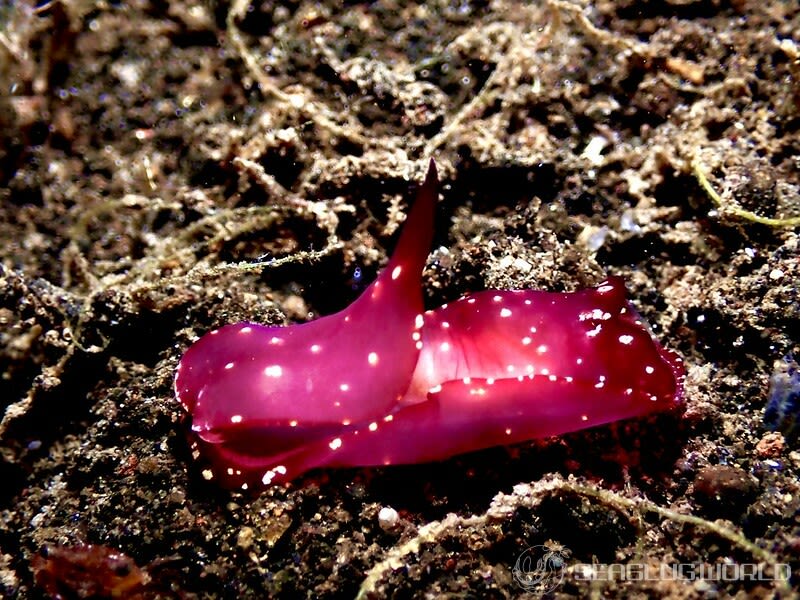Philinopsis ctenophoraphaga Gosliner, 2011

- Photographed by
-
Miyuki Hirakawa
- Location
- Black Sandy Beach, Amed, Pulau Bali, Indonesia
- Date
- 2022/08/14
- Length
- 20mm
- Depth
- 20.0m
- Water temperature
- 28.0℃
MORPHOLOGY
The general body color of the living animal is light pinkish to maroon red. The pigment is a darker red on the anterior portion of the head, along the parapodial margins and along the elongated appendage on the posterior end of the cephalic shield. The entire dorsal and lateral surfaces of the body are ornamented with scattered opaque white spots that are surrounded by a faint halo of lighter pigment. Living animals are elongate (18–40 mm long), and wide (6–15 mm). The anterior end of the cephalic shield is slightly trilobate. The cephalic shield is roughly rectangular and terminates posteriorly into an elongate triangular appendage that is held upright when the animal is actively crawling (Gosliner et al. 2008, top figure). The posterior shield is slightly rounded anteriorly and terminates in a bilobed pair of extensions that are relatively short, forming a skirt around the edge of the mantle. The parapodia are relatively short, leaving most of the cephalic and posterior shields visible. The gill is simply plicate consisting of 10 primary folds and is situated on the right posterior side of the animal.DISTRIBUTION
Philippines (Behrens 2003), Indonesia (Francisco 2006) and the Red Sea (Koretz 2005b).ETYMOLOGY
The name comes from Ctenophora (Greek, meaning comb-bearer) and from the Greek phago,meaning to eat referring to the fact that this species has been observed feeding on benthic ctenophores.
References
- Philinopsis ctenophoraphaga n. sp., Gosliner T.M. (2011) Six new species of aglajid opisthobranch mollusks from the tropical Indo-Pacific. Zootaxa 2751: 1–24.
- クリイロキセワタ(新称), 中野理枝, 今川郁, 今本淳. 2013. 南西諸島の後鰓類1. 頭楯亜目. ちりぼたん 1-22.

